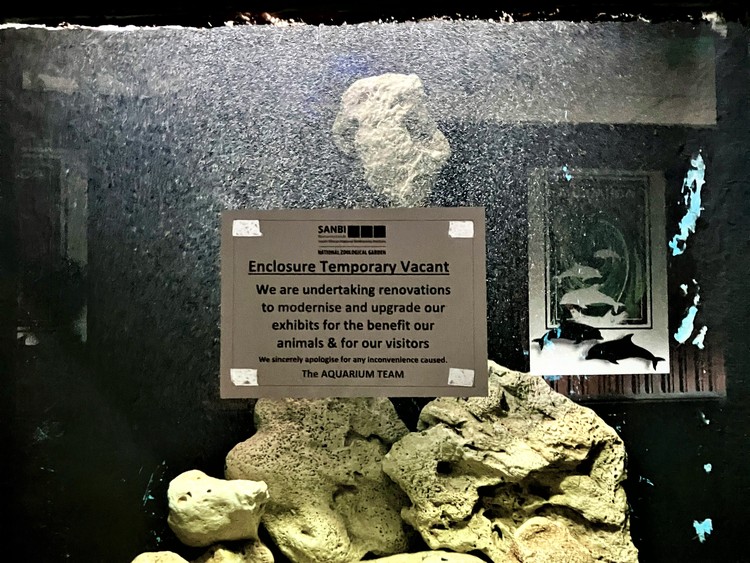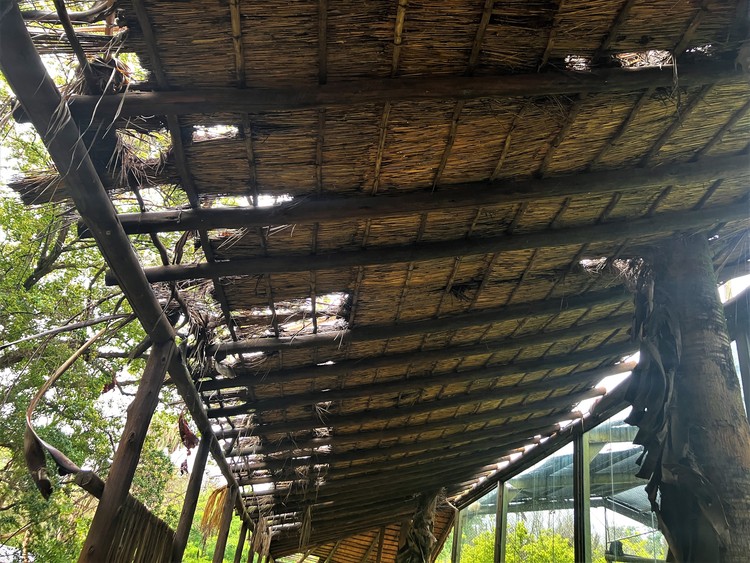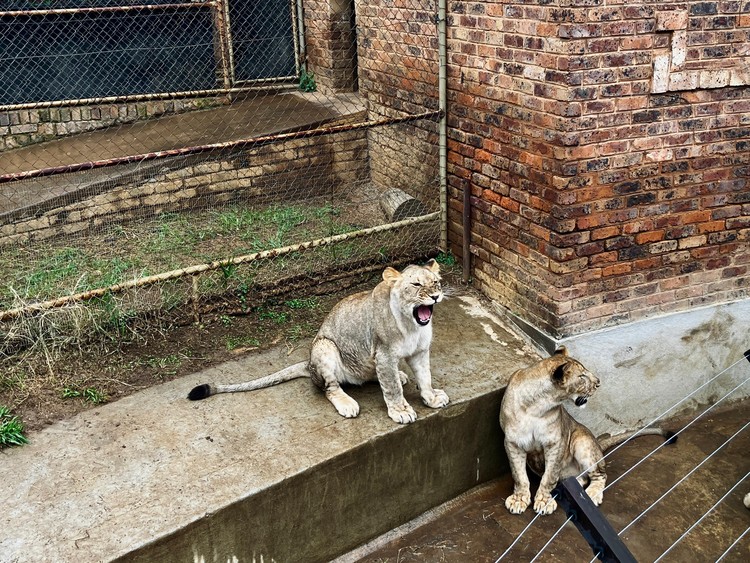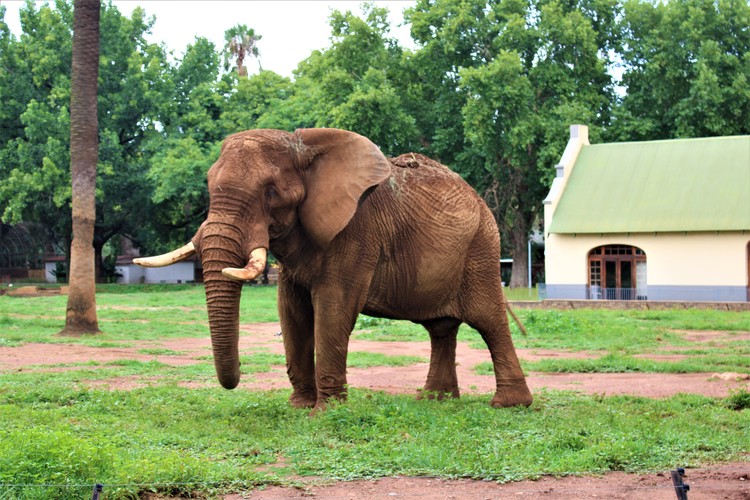Outrage over slow pace of upgrades to Pretoria zoo
SANBI says it is “balancing” visitors’ experience with its ongoing upgrades since taking over the facility in 2018
The shark tank at the National Zoological Garden in Pretoria stands empty following upgrades to the facility. The South African National Biodiversity Institute (SANBI) told reporters this week that they hope to fill the tank before the end of May. Photos: Masego Mafata
- The South African National Biodiversity Institute (SANBI) says it is hard at work to upgrade the zoo in Pretoria, while ensuring that visitors’ experience is not compromised.
- Disgruntled visitors took to social media earlier this month to express their dissatisfaction with the state of the zoo and its offerings.
- Infrastructure upgrades and maintenance at the zoo started two years ago.
- While SANBI did not provide an official completion date, the zoo is spending about R105-million on upgrades and maintenance.
The South African National Biodiversity Institute (SANBI) says it is working hard to ensure that visitors’ experiences at the National Zoological Garden (NZG) in Pretoria are not compromised by the infrastructure upgrades currently underway.
This follows a public outcry on social media from holidaymakers who recently visited the facility and were dissatisfied with the current state of the largest zoo in the country.
Images of broken roofs, empty enclosures and litter strewn in the Apies River that flows through the zoo made the rounds on social media, as visitors shared their frustrations.
SANBI, which has been managing the 123-year-old zoo since 2018, said infrastructure upgrades and maintenance of the facility started two years ago. They have had to balance this work with visitors’ expectations, the institute said.
“The infrastructure we inherited when we assumed management was old, so we’ve had to redo a lot of things,” said SANBI chief executive Shonisani Munzhedzi during a media briefing at the zoo on Thursday, 11 January.
According to Munzhedzi, about R105-million has been allocated for the upgrades and maintenance, and R88-million of it has already been paid to contractors.
Munzhedzi said they have tried to balance visitors’ expectations by moving animals to open enclosures when their enclosures needed upgrading. This, he said, was to ensure that visitors can still see as many of the zoo’s 4,840 animals.
The entrance fee for the zoo has also been discounted by 17%, while the zoo is busy with upgrades, said Munzhedzi.
SANBI plans to do more refurbishments to the thatch roofs around the zoo, some of which have already been completed.
GroundUp paid R100 for a single ticket and our reporter was able to walk through the facility and see most of the Big Five as well as reptiles, fish, a tiger, and zebras.
The facility looked clean and areas that were under construction were cordoned off. We saw a handful of empty enclosures, but the zoo provided an updated map at the entrance as well as a QR code for visitors to scan.
There was litter visible in the Apies River. Workers at the zoo said it comes in from other areas in the City and has flowed down to the zoo. Workers said that the recent heavy rains in the City also caused a build-up of litter in the river.
The open and upgraded enclosures were clean and they appeared large enough for the bigger animals like the tiger and cheetah to roam around. While some of the concrete and pavement bricks along the zoo’s routes had lifted, the rest of the routes were easy to navigate. At about 2pm, some animals including lions and African wild dogs moved, almost like clockwork, to more visible parts of their enclosures in anticipation of their feeding time.
A visitor, who only wanted to be identified as Michael, told GroundUp on Tuesday that he was concerned by the slow pace of upgrades at the zoo.
“I have been coming here since I was a child and now I bring my children here about twice a year. I have seen this place deteriorate over the years and I am worried that maintenance is not happening regularly,” he said.
But Munzhedzi insisted that maintenance work is ongoing after it grounded to a halt during the Covid lockdowns.
Following the public outcry, management at the zoo put up “temporary vacancy” notices outside the empty animal tanks and enclosures, to inform visitors about the upgrades.
The lion enclosure at the zoo.
The zoo has already completed upgrades to the car park, the reptile area and the aquarium. The Dukuduku Restaurant, gorilla, hippo and bird enclosures as well as five sets of toilets have also been renovated.
Upgrades to Stormy Bay, where the seals, shark tank and the white rhino night rooms are situated are yet to be completed. SANBI did not provide an official completion date for the upgrades, but Munzhedzi said they were hoping that many of the facilities would be completed by May this year.
Munzhedzi said SANBI is still working on securing additional funding and to strengthen partnerships for the ongoing maintenance. One of these partners is the non-profit organisation Friends of the Zoo.
Friends of the Zoo hosts fundraising walks and clean-ups at the zoo and assists, through a network of volunteers, with the basic maintenance of the zoo.
Director Gé Breytenbach said, “We have people coming from Soweto to see our animals. Researchers from all over also come to the research centre and biobank facilities here at the zoo. For some people, this zoo is the safest and only chance they will get to see wild animals and learn about how to look after them.”
Charley is a 44-year-old elephant at the National Zoological Garden who has spent a little more than half of his life here.
© 2024 GroundUp. This article is licensed under a Creative Commons Attribution-NoDerivatives 4.0 International License.
You may republish this article, so long as you credit the authors and GroundUp, and do not change the text. Please include a link back to the original article.
We put an invisible pixel in the article so that we can count traffic to republishers. All analytics tools are solely on our servers. We do not give our logs to any third party. Logs are deleted after two weeks. We do not use any IP address identifying information except to count regional traffic. We are solely interested in counting hits, not tracking users. If you republish, please do not delete the invisible pixel.






